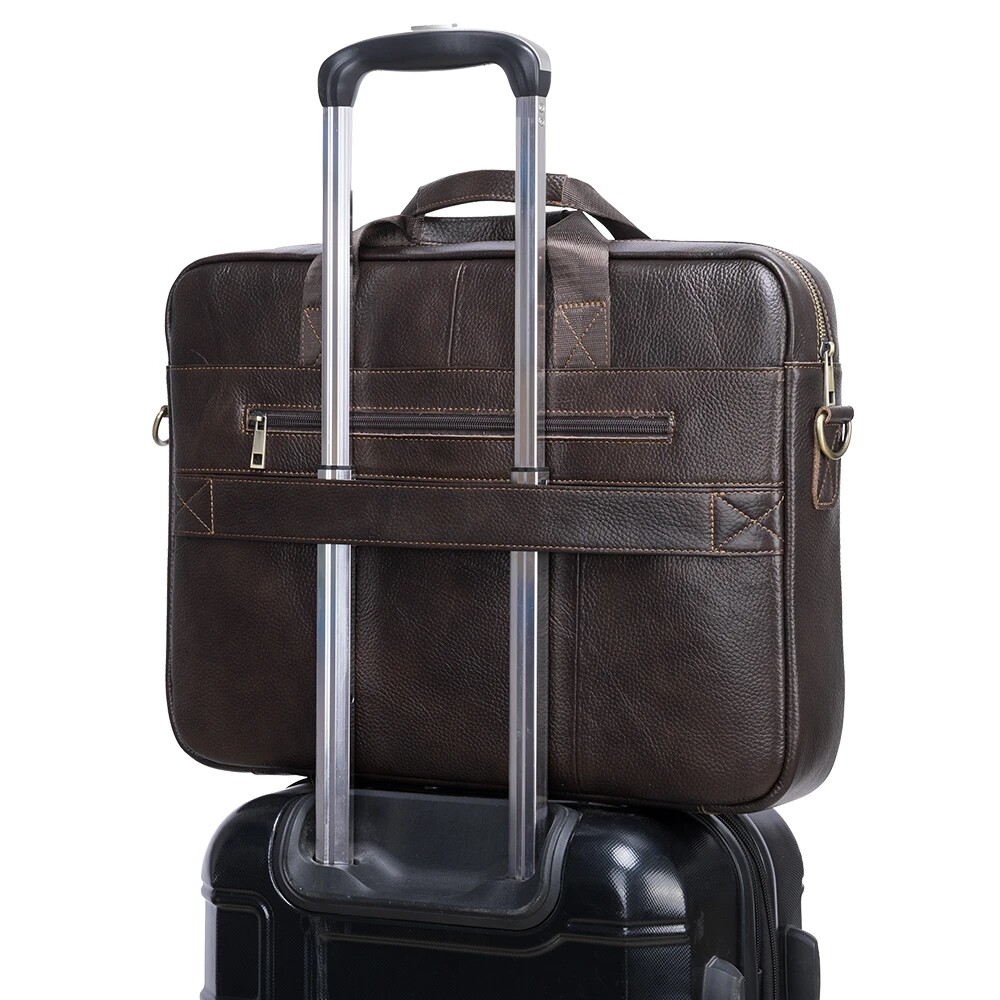ইমেল বিন্যাস ত্রুটি
emailCannotEmpty
emailDoesExist
pwdLetterLimtTip
inconsistentPwd
pwdLetterLimtTip
inconsistentPwd


Understanding Financial and Legal Considerations for Exporting Leather Bags
Exporting leather bags can be a lucrative venture, but it requires a thorough understanding of both financial and legal aspects to ensure success and compliance. This article provides an in-depth look at the cost analysis involved in exporting leather bags and the essential legal and compliance issues that exporters need to navigate.
I. Financial Considerations for Exporting Leather Bags
A. Cost Analysis of Exporting Leather Bags
1. Introduction to Exporting Costs
Exporting leather bags involves various financial considerations that are critical for ensuring profitability and sustainability. Understanding these costs helps businesses plan effectively and avoid unexpected expenses. Key cost areas include production, shipping, customs, insurance, marketing, and sales.
2. Production Costs
Production costs are the foundation of the overall expense structure for exporting leather bags. These costs encompass several factors:
Materials: The quality and type of leather used directly impact the cost. Premium leathers such as full-grain or top-grain leather are more expensive than lower-grade options. Additionally, other materials like zippers, linings, and hardware contribute to the total cost.
Labor: Manufacturing leather bags involves skilled labor, which can vary in cost depending on the location and level of expertise required. Labor costs can include wages, benefits, and any additional expenses related to skilled craftsmanship.
Overheads: These include costs associated with factory operations, such as utilities, equipment maintenance, and administrative expenses. Efficient management of overheads is crucial for maintaining cost-effectiveness.
3. Export-Related Costs
Exporting leather bags introduces additional costs beyond production:
Shipping and Logistics: Choosing the right shipping method is vital. Air freight is faster but more expensive, while sea freight is cost-effective for larger shipments but slower. Handling and packaging are also significant costs, as proper packaging ensures the safe transport of leather bags.
Customs Duties and Taxes: Import tariffs and customs duties vary by country and can significantly impact the overall cost of exporting leather bags. Understanding the specific duties applicable to each destination market is essential for accurate pricing.
4. Insurance and Risk Management
Insurance is a critical aspect of exporting leather bags. Various types of insurance coverage can protect against risks such as loss, damage, or theft during transit:
Cargo Insurance: Covers the value of the goods in transit against potential loss or damage.
Liability Insurance: Provides coverage for potential claims related to product defects or other liabilities.
Managing risks involves assessing potential threats and implementing strategies to mitigate them, such as diversifying shipping routes or securing reliable logistics partners.
5. Marketing and Sales Expenses
Marketing and sales expenses are necessary for penetrating international markets:
Marketing: Developing effective marketing strategies tailored to foreign markets involves costs related to market research, advertising campaigns, and promotional materials. Online marketing and social media presence can be crucial for reaching global customers.
Sales Commissions: Working with international agents or distributors may involve paying commissions or fees based on sales performance.
6. Financial Planning and Budgeting
Creating a comprehensive budget is essential for managing financial aspects of exporting leather bags:
Budget Creation: A detailed budget should include all anticipated costs, from production to shipping and marketing. Accurate budgeting helps in setting realistic pricing and profitability goals.
Financial Tools: Utilize financial planning tools and software to track expenses, analyze financial performance, and make informed decisions.
Profit Margins: Regularly review and adjust profit margins based on actual costs and market conditions to ensure profitability.
II. Legal and Compliance Issues for Exporting Leather Bags
A. Legal Requirements for Exporting Leather Bags
1. Understanding Export Regulations
Navigating international export regulations is crucial for compliance and avoiding legal issues:
Regulatory Bodies: Different countries have specific regulatory bodies overseeing exports. Understanding their requirements helps in ensuring adherence to local laws and regulations.
Export Controls: Some countries impose export controls on certain products, including leather goods. Ensure that leather bags comply with these controls to avoid restrictions or penalties.
2. Documentation and Paperwork
Proper documentation is essential for smooth international transactions:
Export Licenses and Permits: Depending on the destination country, you may need specific licenses or permits to export leather bags. Research the requirements of each market to ensure compliance.
Certificates of Origin and Authenticity: These documents verify the origin and quality of the leather bags. They are often required by customs authorities to facilitate clearance.
Commercial Invoices and Packing Lists: Detailed invoices and packing lists provide information about the goods being shipped and their value. Accurate documentation helps in avoiding delays and disputes.
3. Compliance with International Standards
Meeting international standards is essential for market acceptance:
Quality Standards: Different countries have varying quality standards for leather products. Ensure that leather bags meet these standards to avoid rejection or returns.
Certifications: Obtain relevant certifications such as ISO (International Organization for Standardization) or CE (Conformité Européenne) to demonstrate compliance with international quality and safety standards.
4. Intellectual Property and Trademark Issues
Protecting intellectual property is crucial for safeguarding your brand:
Intellectual Property Protection: Register trademarks and patents in the markets where you plan to sell leather bags. This protects your designs and brand from infringement.
Trademark Registration: Registering your brand name and logo helps prevent unauthorized use and strengthens your position in the international market.
Dispute Resolution: Be prepared to address any potential intellectual property disputes that may arise. Seek legal assistance if needed to resolve conflicts.
5. Environmental and Sustainability Regulations
Adhering to environmental regulations is increasingly important in international trade:
Environmental Compliance: Many countries have stringent environmental regulations related to leather production. Ensure that your production processes comply with these regulations to avoid legal issues.
Sustainability Practices: Implementing sustainable practices in leather production, such as reducing waste and using eco-friendly materials, can enhance your market appeal and comply with regulatory requirements.
Certifications: Obtain certifications for sustainable practices, such as the Global Organic Textile Standard (GOTS) or Forest Stewardship Council (FSC), to demonstrate your commitment to environmental responsibility.
6. Trade Agreements and Tariffs
Trade agreements can impact the cost and feasibility of exporting leather bags:
Trade Agreements: Research relevant trade agreements between your country and the destination market. These agreements can offer benefits such as reduced tariffs or preferential treatment.
Tariffs and Trade Barriers: Understand the tariffs and trade barriers applicable to leather bags in different markets. Adjust your pricing and business strategy accordingly to remain competitive.
7. Legal Dispute Resolution
Handling legal disputes effectively is essential for maintaining smooth operations:
Dispute Mechanisms: Establish clear mechanisms for resolving disputes related to export contracts or agreements. This may include arbitration clauses or mediation processes.
Contractual Agreements: Draft detailed contracts that outline terms and conditions for international transactions. Include provisions for dispute resolution to protect your interests.
Legal Resources: Seek legal assistance from professionals experienced in international trade to navigate complex legal issues and resolve disputes efficiently.
Conclusion
Exporting leather bags presents a range of financial and legal considerations that require careful planning and management. By understanding the costs involved, complying with international regulations, and protecting intellectual property, businesses can navigate the complexities of international trade successfully. Implementing effective financial planning and ensuring adherence to legal requirements will help in achieving profitability and maintaining a positive reputation in the global market.

